Ukrainian traditional national costume reflects the artistic talent of Ukrainian women who create beautiful clothes for the whole family. All elements of clothing are simple in form, rich in various decorations, saturated with bright colors. Working on the decoration of a shirt, skirt, headdress or other element, Ukrainian women used colors and images of their native nature to glorify their kind and to embody in ornaments their dream of a beautiful future.
The fabrics from which Ukrainian costume items were sewn for centuries were usually light or white, because colorful embroidery, bright beads, ribbons, and wreaths looked especially picturesque against its background. Colored woolen fabrics also went well with white, from which spare parts, cloaks, belts, and other clothing were usually sewn.
There are differences in the decoration and elements of clothing in different regions of Ukraine, but the general ensemble of the Ukrainian costume is clearly visible throughout its territory. This can be seen by examining the traditional Ukrainian costume of different regions, which was formed by the 19th - early 20th centuries.
Bukovina
The girl's outfit consisted of a white embroidered dress with long wide sleeves, decorated with multi-colored embroidery, over which a fur sleeveless jacket with bright colored patterns embroidered with woolen threads was worn. A woolen cloth loincloth, also decorated with embroidery, was tied around the hips. A "koda" was worn on the girl's head - an original headdress, the base of which was made of cardboard, then trimmed with fabric and decorated with artificial flowers, braid, and beads. Necklaces made of colored glass served as jewelry for girls. Girls wore leather boots. Boots were yellow, red, or brown with decorative ornaments.
Young men and young men of Bukovina wore long tunic-like embroidered shirts over narrow trousers - holosh, sewn from undyed canvas and decorated with embroidery at the bottom of the trousers. Their belts were leather, wide. As outerwear - a sleeveless sheepskin coat and a cloth serdak, which were decorated with leather appliqués, embroidery, laces. Flowers, feathers, and colorful braid were sewn onto hats. On their feet they wore "shrinkage" - a type of boots sewn from leather.
Western Transcarpathia
The basis of the women's costume was a long embroidered dress - "Dovgan". A characteristic feature of Dovgan is the "bosom" - a decoration in the form of a woven square of red threads, sewn to the neck. The sleeves were embroidered with a geometric pattern. The short sleeveless dress - "Plichko" was decorated with braid and embroidery. "Plat" - a long apron, which was also decorated with embroidery, ribbons, braid and lace. Girls wore a headdress resembling a wreath, trimmed with beads and flowers. As a decoration, they wore "silyanki" - colored ribbons woven from beads.
Men of this region wore short embroidered shirts, in which the embroidery was applied not only on the chest, but also on the shoulders. Shirts were tucked into wide trousers, the peculiarity of which is the tassels on the lower edge of the trousers - "Royt". A wide leather belt - "cheres" was decorated with embossing and metal inserts. Leather shoes - shoes for men and women - were also decorated in the same way.
Eastern Transcarpathia
A women's shirt made of homespun linen in this region was called a "romovanka". It was sewn with inserts, the "smooth" technique was used in the embroidery. You can buy such embroidered shirts in our store. Of course, in their somewhat modern interpretation. A "spare" made of woolen fabric was used as a skirt, which was fastened with a belt - a "bagram". Sleeveless shirts were colorfully embroidered, decorated with tassels, beads, and leather appliques. A beautiful, bright colored scarf was most often worn on the head. "Wrinkles" - leather socks, worn over long knitted socks with ornaments.
Men wore an embroidered shirt in the form of a tunic over cloth trousers - "gachay". The collar, chest and hem of the shirt were embroidered with colorful embroidery. A sleeveless shirt was worn over the shirt, and a serdak was worn on top. These items of clothing were decorated with wool tassels, leather appliques, laces and embroidery. Usually men wore a hat called a "klebanka". Cloth socks, over which the postols were worn, were called "kapchuri".
Lviv region
Lviv women's embroidered shirts are characterized by a wealth of embroidery on the sleeves. The sleeveless shirt made of cloth is trimmed with colored cords made of woolen threads and lace. Women wore a light Kabat, which was also decorated with cords. An apron embroidered with Ukrainian floral ornaments was worn over a skirt made of striped woolen fabric. A colorful headdress - "barvnytsy" - was worn on the head, and on top it was covered with an embroidered scarf made of thin light linen. The neck and chest were decorated with colorful beads or necklaces. The postols were worn over linen onuchi.
Men's shirts were sewn on a yoke. Embroidery was on the turn-down collar, cuffs and on the chest. Pants were narrow, dark, sewn from homespun cloth. "Kaptan" - a woolen caftan, decorated with leather or cloth appliqués and cords of different colors. Hats were worn woolen, decorated with flowers, feathers and ribbons. They wore sandals, but people who were not poor could afford beautifully decorated leather boots.
Chernihiv region
Elegant women's embroidered shirts had wide sleeves, gathered at the bottom into a thin cuff. The embroidery of this region is characterized by a red-black color scheme. The sleeveless corset had a relatively complex cut with undercuts and pleats. The "andarak" skirt was sewn into a pleat from woolen cloth, most often red. A woven multi-colored pattern ran along the bottom of the skirt. The andarak was covered in front with a white embroidered apron. Married women's hair was hidden in a cap, over which one or two bright colored scarves were tied. On their feet, they wore braided lychaks over light-colored onuchey.
Shirts for men were sewn in the form of a long tunic with a stand-up collar, the sleeves were gathered into cuffs. In addition to wide embroidery on the chest, the shirts had embroidery on the collar, cuffs, and hem. The shirts were worn loose, wrapped around the waist with a twisted belt. The pants were not very wide, sewn from thick, coarse cloth.
Poltava region
Women's embroidered shirts were often embroidered white on white, although red-black patterns and lace were not uncommon. The sleeves were gathered in a collection both at the top and bottom. Corsets of various lengths had soft skirts at the bottom and were decorated with embroidery, braid, and buttons. Skirts were sewn from semi-woolen factory or homespun fabric, decorated with ribbons, woolen stripes, or an interesting type of applique - "peppers". An elegant white apron was decorated with embroidery and lace. Girls wore wreaths with colorful ribbons on their heads, women - a "namitka" or a scarf over their ochipka. Bright jewelry - beads, beads, dukachi. On their feet - leather shoes or boots.
Men's shirts, sewn from white linen, were embroidered with white or undyed linen thread, and lace was used. The sleeves were wide, with embroidery along the bottom. The trousers of the trousers made of thick linen were tucked into "chiriki" - boots with soft, low tops. The trousers were fastened at the waist with a belt, which was also a decoration, since it was woven from multi-colored threads in beautiful patterns.
Kyiv region
White women's embroidered shirts were sewn with a narrow collar - a stand, which was also trimmed with a pattern. For cross-stitch embroidery, red-black and red-blue color combinations, as well as lace, are characteristic. Two zapaski were used as a skirt - the front and back of different colors. A beautiful wide long belt with tassels was tied at the waist. The outerwear was a "yupka" - a cloth or frock jacket. In addition to ordinary materials, applique with red "peppers" was used to decorate it. Bright embroidered scarves were worn on the head. Numerous multi-colored beads were the main traditional women's decoration. Festive shoes - red sapyan boots.
Men's embroidered shirts made of white homespun linen, gathered under a narrow collar, were embroidered crosswise with red, black and blue threads. Trousers made of coarse homespun linen were girded with a wide belt woven with colored stripes. In the cool season, a cloth scroll was worn, which was decorated with leather inserts or woolen stripes. A tall astrakhan hat was worn on the head, and low leather boots were worn on the feet.
Volyn region
Women wore white embroidered shirts made of homespun linen. On top they wore a "kusan" - a jacket sewn from thick woolen homespun fabric, cut at the waist and with pleats at the back. The "litnik" skirt was woven with multi-colored stripes. A thick homespun apron woven with colorful geometric ornaments was worn over the skirt in front. The hair of married women was wound on a "kibalka" in the form of a bundle of yarn or a rim, and then covered with a beautiful embroidered scarf.
Embroidered men's shirts were usually sewn with a wide turn-down collar and worn over trousers. Red geometric patterns are characteristic of the embroidery. The belts were woven not wide and short, but very colorful, with "kutas" - tassels in the form of fringe. The trousers made of homespun cloth were quite narrow. The usual footwear for both men and women were leather sandals. They were worn over light-colored canvas sandals, which were called "virivaya".
Podillia
Men's tunic-like embroidered shirt had a wide stand-up collar or a turn-down collar, which were colorfully embroidered with a single pattern with the "Pazushka", sleeves and bottom edge. Belts were wide, long, with tassels, with woven colored stripes. Narrow dark pants were sewn from homespun cloth. Warm outerwear was a fur coat trimmed with fur at the edges, or a cloth "chugaina". Outerwear was usually decorated with colorful patterns made of woolen threads. On the head of a man they wore astrakhan hats or felt hats decorated with artificial flowers and ribbons.
Women's embroidered dresses of this region are characterized by wide, continuous sleeves resembling modern raglan. The collars are wide - turn-down or stand-up. Sometimes characteristic vertical stripes were embroidered on the chest in a geometric pattern. Shirts were worn with an overlap above the belt. Red-blue or red-blue colors were chosen for embroidery. Skirts were sewn from homespun woolen cloth - "litnik" or "gorbatka", decorated with ribbons or woven patterns at the bottom. Belts were long, bright, wide, with tassels, tied on both sides. On their heads, girls wore a Podolsk wreath, which is distinguished by the fact that larger flowers were woven into the back than in the front. Women wore a low cylindrical headdress, to which a "naframa" made of white thin fabric was tied at the back. Jewelry is traditional for Ukrainian women of this region: beads, dukachi, necklace. Shoes: leather sandals with straps or boots.
Kharkiv region
Embroidered shirts for women were sewn with rectangular inserts, which were embroidered extensively along the sleeves and narrow stand-up collar. The sleeves were gathered at the bottom in a "thread" assembly. The hem of the shirt was often laced. Corsets were sewn from fine factory wool, and for holidays from silk or brocade. The skirts of the plakht were woven with a complex square pattern. In front, it was closed with a "veil" - an elegant apron decorated with wide braid. The woman's head was covered with colorful scarves worn over the ochipka. On holidays, they wore sapyan boots.
A feature of men's shirts in this region were "barrels" sewn between the shelves. The shelves were assembled into assemblies and sewn to the yoke. The embroidery usually consisted of red and black ornaments made with a cross. The shirt was worn tucked into wide trousers, the top of which was tied with a beautiful belt with fringe. A popular summer men's headdress was a straw hat "brill". Shoes were leather boots.
Dnipropetrovsk region
A distinctive feature of the skirts and corsets of this region were rectangular necklines, which are now called "squares". Skirts were sewn from factory cloth, velvet and other non-coarse fabrics. They were decorated with ornaments made of colored threads and ribbons. The sheets were worn whole, not sewn. The fabric for them was woven with a beautiful multicolored ornament. In front of the sheet, an apron made of white linen, decorated with rich embroidery, was worn. Numerous decorations were used - necklaces, brooches, earrings. Wealthy women could afford "chernobritsy" boots with a ring, with copper horseshoes.
A men's linen shirt was sewn with wide sleeves without cuffs in two sections. A sleeve was sewn in front, the stand-up collar was tied with a ribbon or braid. The embroidery was done in traditional red and black tones. The shirt was tucked into loose trousers made of strong cloth. The belts were woven very long and wide, from bright threads, the ends were decorated with tassels. The most popular outerwear were scrolls. They were sewn from thick homespun cloth. The stand-up collar, the edges of the sleeves and the floor of the scroll were decorated with strips of fabric, braid. A cylindrical straw hat was worn on the head.
Donetsk region
The embroidered shirt was sewn on a yoke, richly decorated with red and black ornaments using netting. Blouses - "skirts" were decorated with multi-colored braid and lace. Skirts were sewn wide, from beautiful factory woolen fabric. Ribbons were used for decoration, and the lower edge was hemmed with a "brush", which protected the edge from rubbing. An elegant apron was decorated with embroidery, netting, lace and ruffles. The woman's hair was tightly twisted into a "Google", a "net" was put on it, and a beautiful scarf with embroidery was put on top. On her feet, women wore high boots with laces.
Men wore tunic-like shirts. The sleeve, wide standing collar and lower edge of the sleeves were decorated with embroidery. A characteristic element of the men's costume of this region was a short cloth vest of dark colors - "gilet". Pants were woolen, narrow cut. Boots were worn with high, hard tops - "bottles". A cap was worn on the head - a type of cap.
Models and decor of modern clothes are often based on beautiful examples of traditional Ukrainian national costume. Its best features were used by fashion designers back in the seventies of the last century, when fashion seemed to have significantly departed from folk traditions. However, the desire for true beauty always returns the attention of talented fashion designers to the unique features of folk clothing. For example, we can describe some costumes of the end of the last century, created by fashion designers from different regions of Ukraine using Ukrainian traditions, which will be relevant today.
Zhytomyr region
The costume for a woman consists of a cotton embroidered dress, made in local traditions, and a sleeveless woolen dress, imitating a skirt with a sleeveless top. An apron in the same color as the dress is decorated with traditional embroidery and lace. A woolen scarf is woven with a floral pattern. Jewelry in the form of beads in several threads and a woven beaded necklace harmonize well with this clothing.
In a similar composition, you can create a costume for a young girl. The embroidered dress is sewn with short sleeves, decorated with traditional embroidery. For a sundress, it is better to use a light-colored youth fabric. As for the decorations, a small braid of light beads.
Ternopil region
A long men's embroidered shirt is worn over trousers and tied with a belt. The color of the shirt can be white or dark, the embroidery on the sleeve, collar, cuffs and lower edge of the hem is multi-colored. Dark woolen trousers are sewn from factory fabric.
The basis of the girl's costume is an embroidered blouse with a full sleeve. It is worn with a woolen skirt of a beautiful youth color. On top, you can wear a sleeveless top, which is decorated with braid in Ukrainian traditions.
Ivano-Frankivsk region
A blouse with full sleeves made of thin white factory fabric. Podolsk youth embroidered shirts are characterized by rich multi-colored embroidery all over the sleeve, as well as on the chest and hem. A dark sleeveless shirt made of woolen fabric, resembling a corset, is beautifully embroidered, mainly with colorful floral patterns. A skirt made of the same fabric as the sleeveless shirt is sewn into a pleat. Its hem is decorated with embroidery. Soft shoes that imitate traditional leather shoes look good with such a suit.
Older women decorate their vyshyvankas with more modest patterns using threads of one or two colors. The cut is traditional - with full sleeves. A beautiful colored skirt made of wool has wide pleats or pleats, its hem is decorated with dark ribbons or a small lace.
Vinnytsia and Khmelnytsia regions
In this region, women's blouses made of white thin fabric with a yoke are popular. They are embroidered with beautiful colored floral ornaments made with smoothness. Special attention is paid to the many bright colors in embroidery. A calico apron is worn over a colorful wide skirt, decorated with a frill - "shlyarka" and multi-colored braid.
In a men's suit, the white embroidery sewn on the yoke, with an insert of small folds - "flounces" attracts attention. The stand-up collar, bosom and cuffs are embroidered with multi-colored floral patterns. You can use ordinary modern trousers, preferably dark in color.
Chernihiv and Transcarpathian regions
A white blouse without embroidery made of cotton factory fabric is suitable for an elderly woman. The modest blouse is decorated with longitudinal small folds of "stitching". A free-cut skirt made of plain fabric. The apron is decorated with traditional red-black embroidery and thin white lace. The decorations for this costume are inconspicuous - openwork beaded braid and a colored bow at the collar of the blouse.
Girls wear beautifully and brightly embroidered vyshyvankas, over which they traditionally wear sleeveless shirts with serrated edges. The dark sleeveless shirt is decorated with bright flowers applied to the fabric or embroidered. The apron "plat" is decorated with colorful lace to match the same bright belt with tassels. The decorations are traditional beaded "silyanki".
Not only in rural regions, but also in the largest cities, the Ukrainian costume was an example for creating fashionable clothes using folk motifs. Ukrainian sleeveless jackets trimmed with fur have always been very popular. They were necessarily decorated with colorful embroidery and colored braid. National motifs were used to create skirt models and their decoration. Even a fashionable women's trouser suit, the jacket of which is embroidered with beautiful Podolsk embroidery, acquires a unique elegant look.
In our century, the Ukrainian costume is experiencing another surge in popularity. More and more people are striving to dress according to their native traditions. To do this, it is not necessary to wear a classic costume of past centuries. Using knowledge of Ukrainian clothing of their region, any person can enrich their clothes with native authentic motifs.
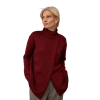
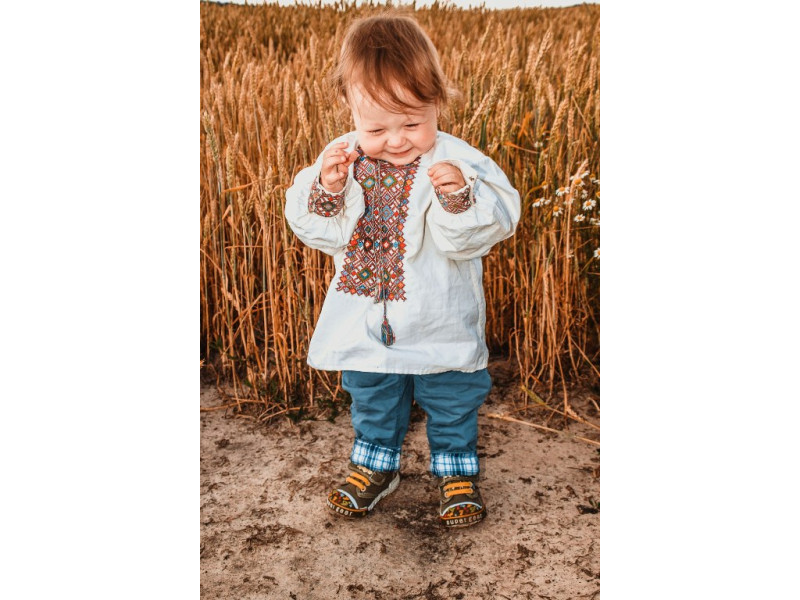


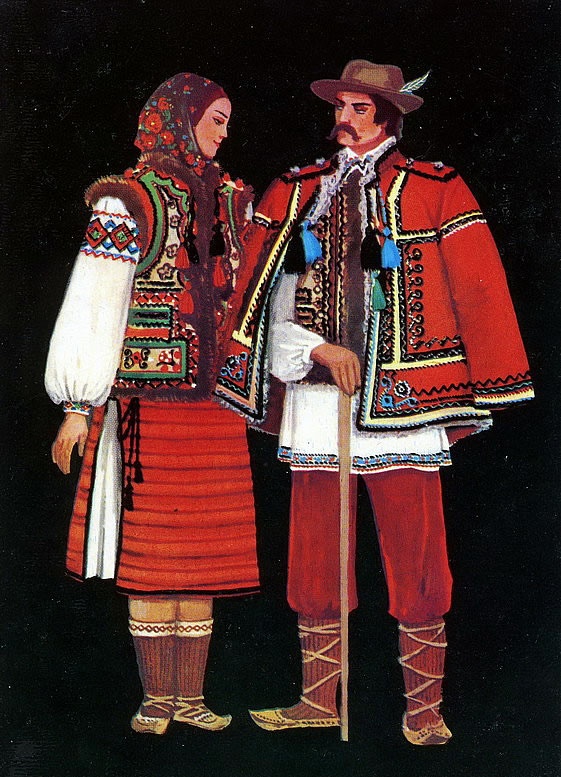

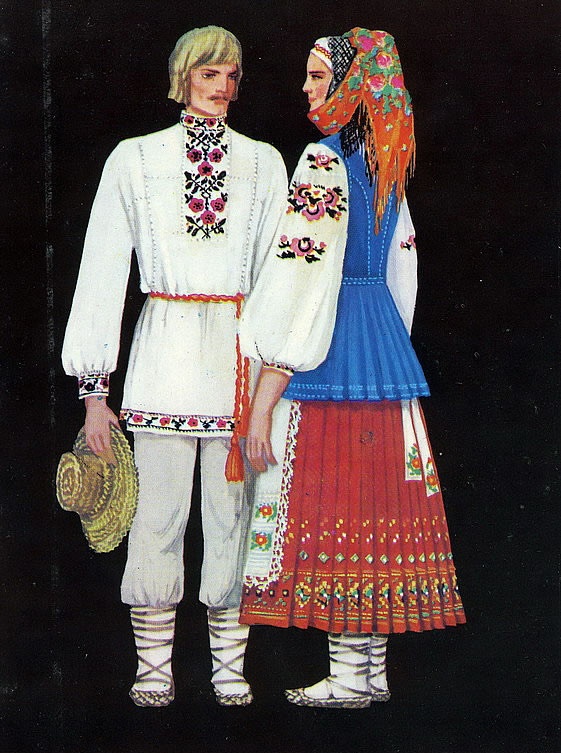
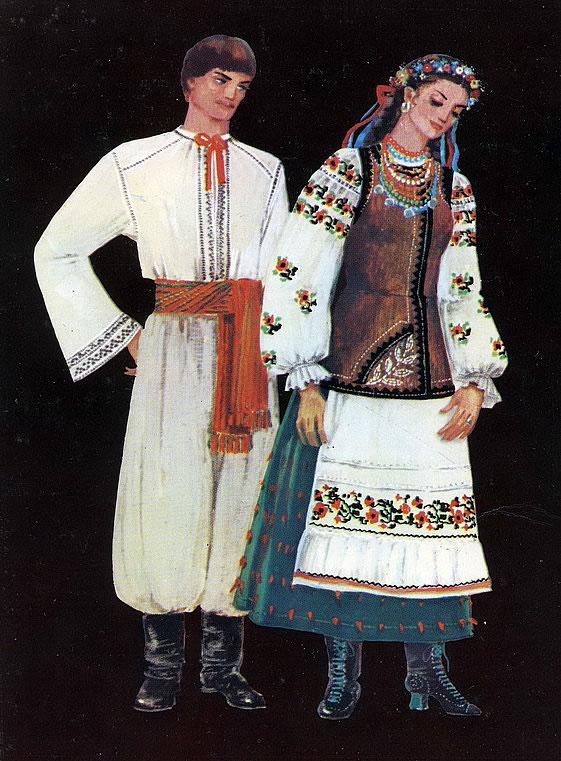
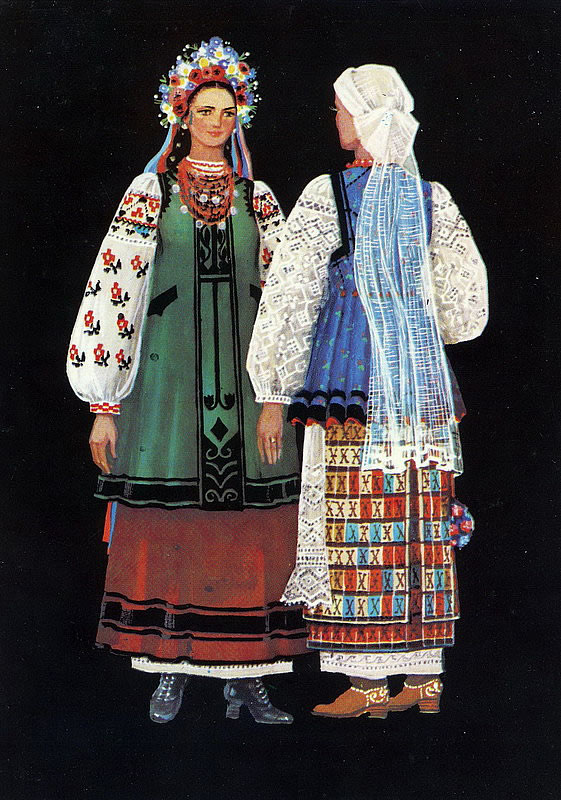
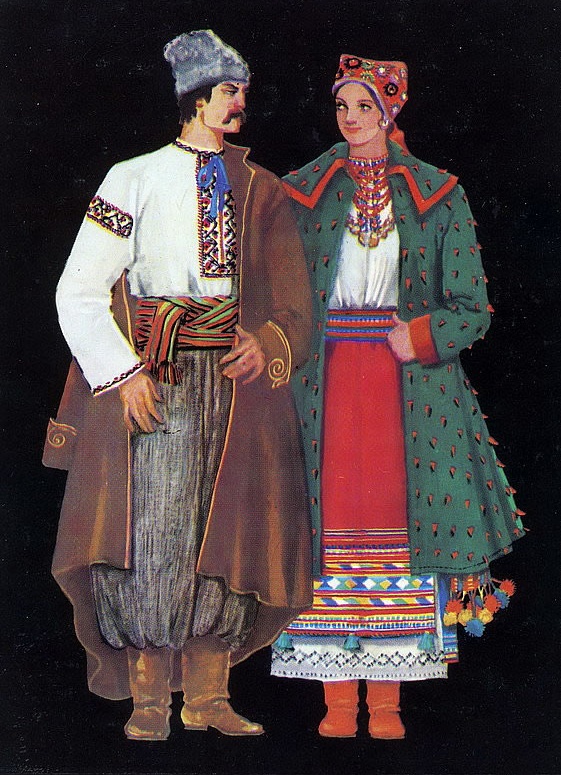
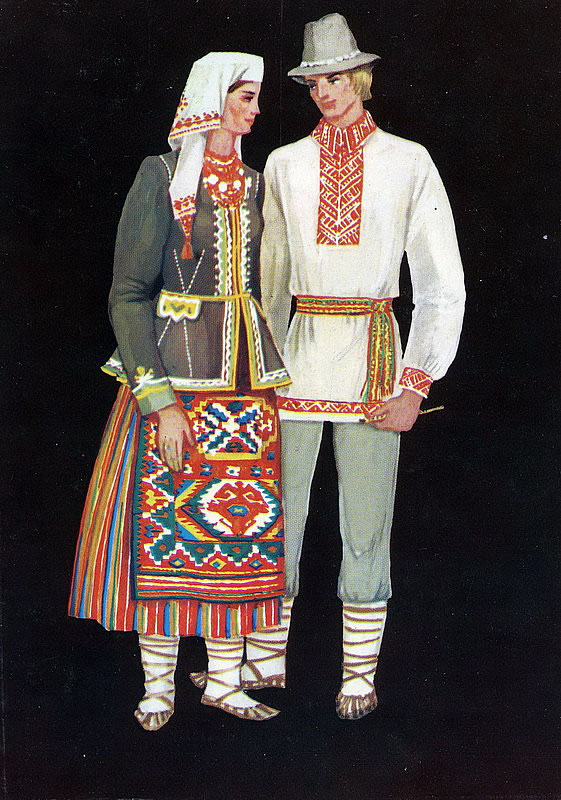
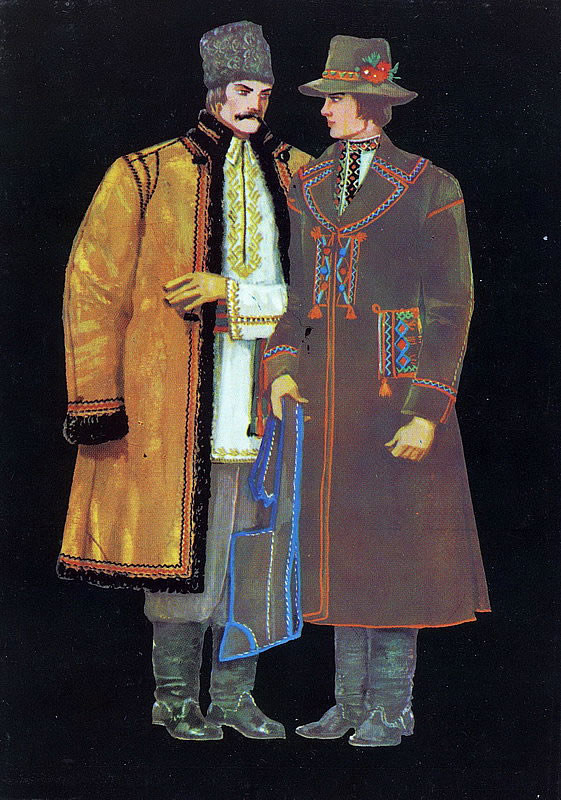

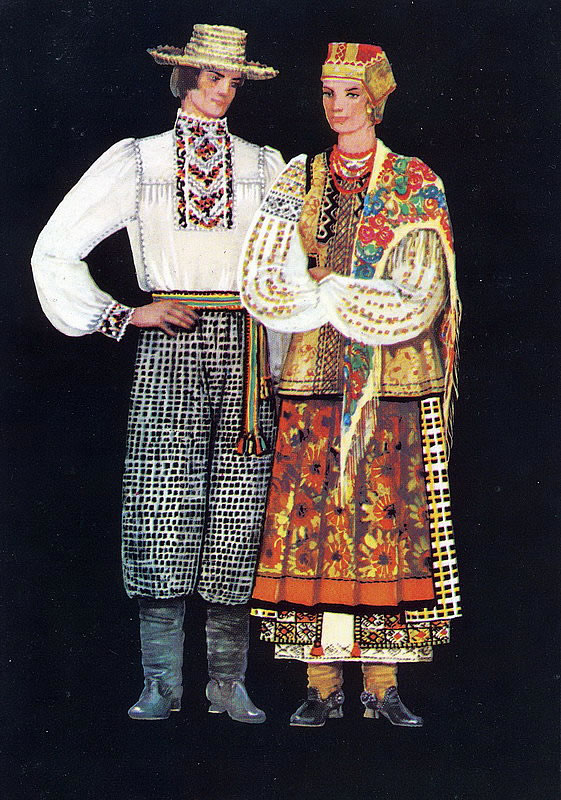
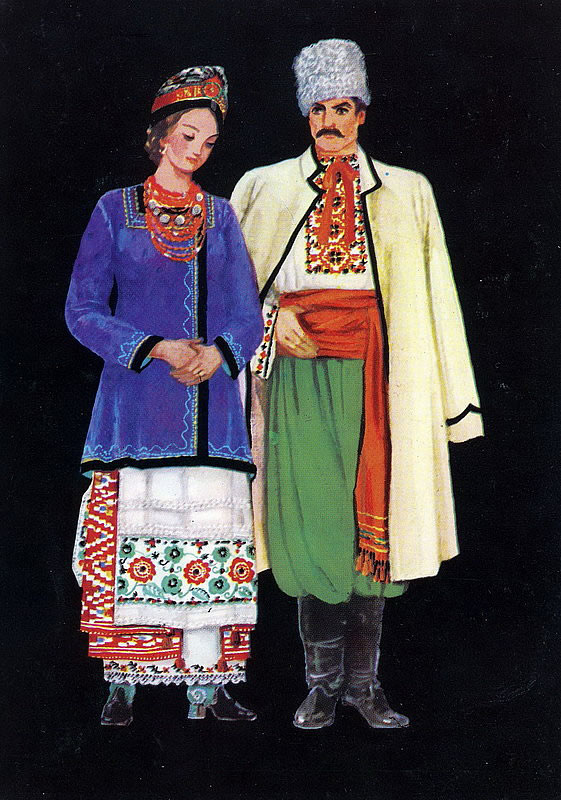
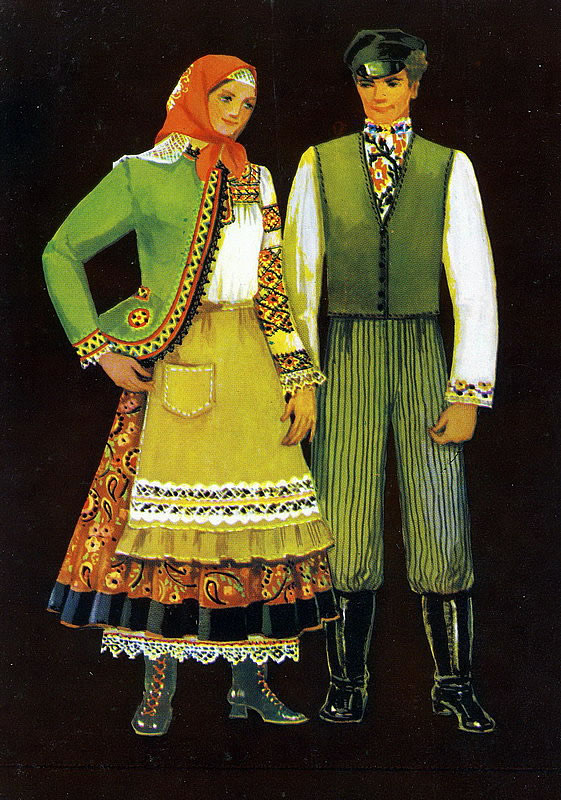

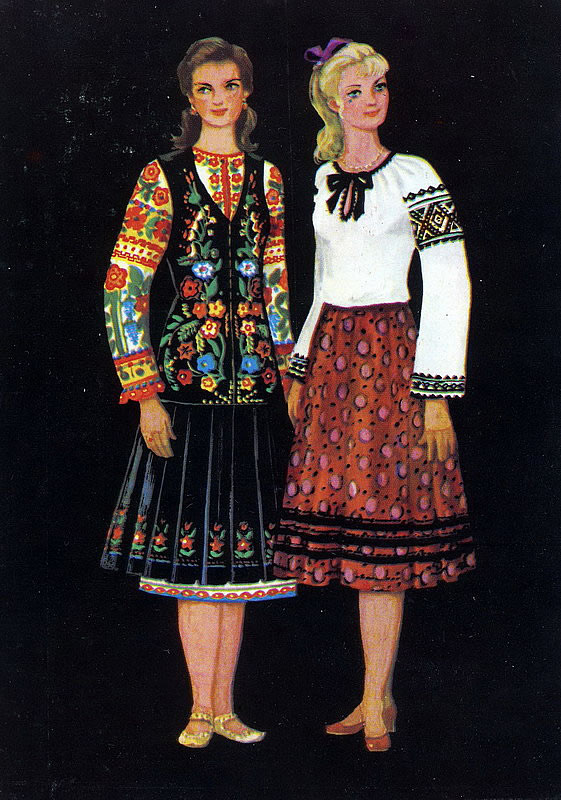
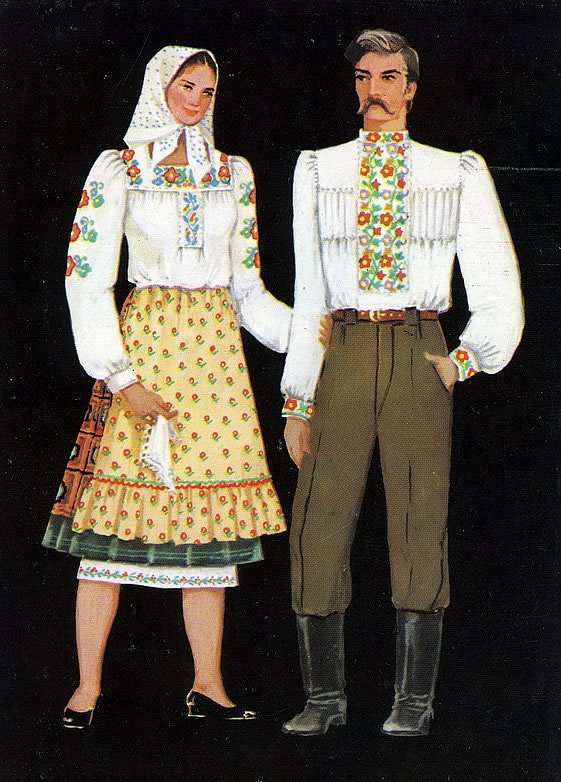
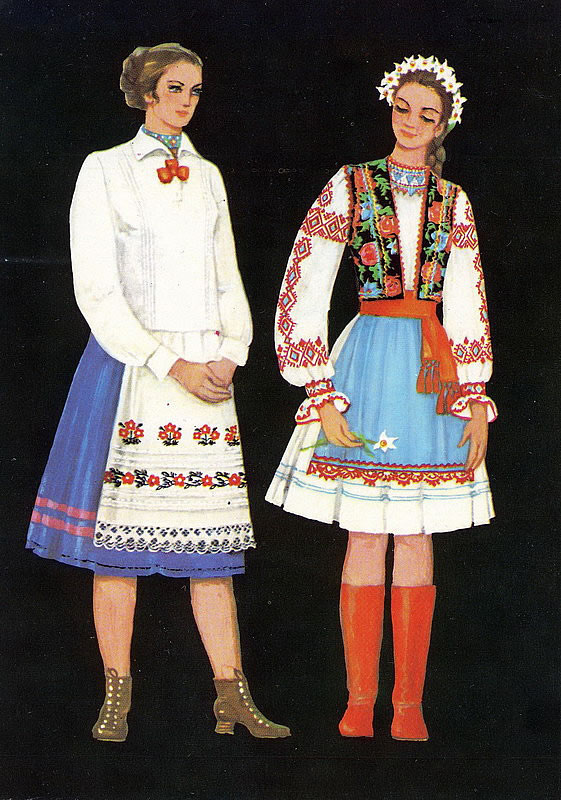
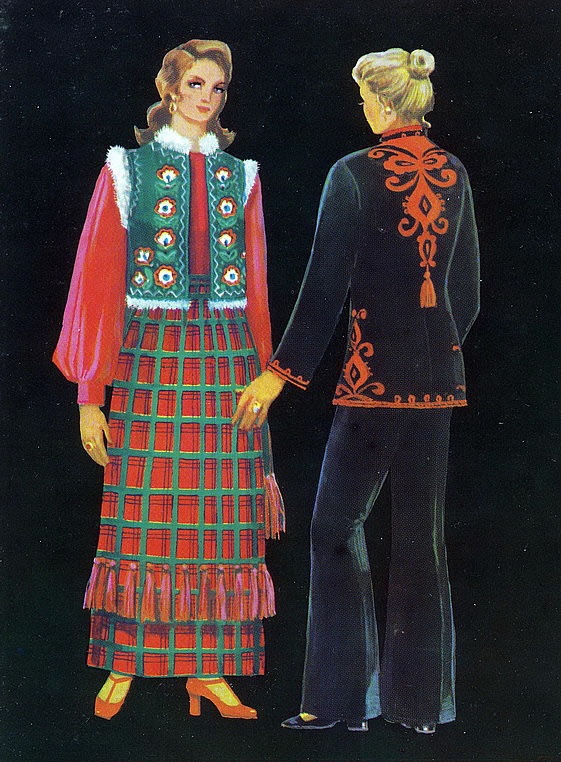
Write a comment